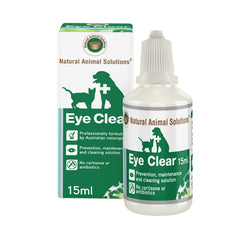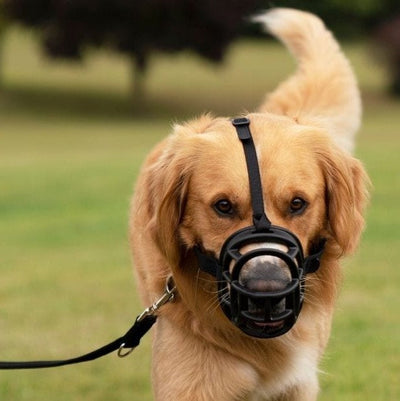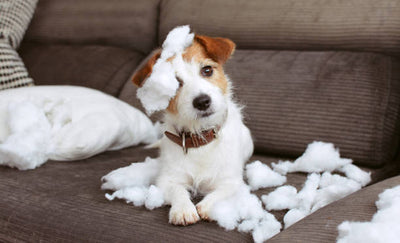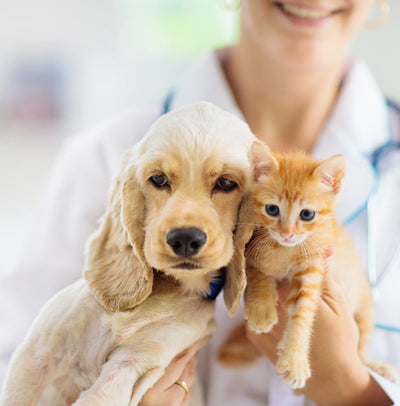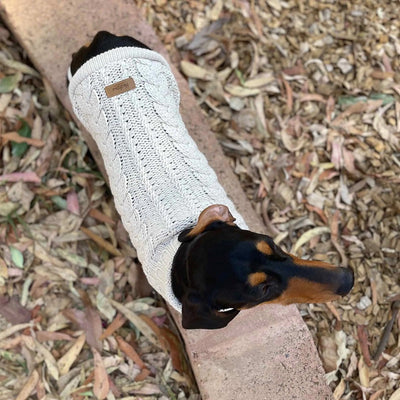
Are you tired of constantly wiping away those unsightly tear stains from your furry friend's adorable face? Or perhaps you've noticed that your beloved pup has been suffering from recurring eye infections. If you're looking for answers, you've come to the right place. In this comprehensive guide, we will delve into the various causes of eye goop in dogs, shedding light on this common and sometimes perplexing issue. Whether it's excessive tearing, crusty discharge, or recurring infections, understanding the underlying reasons behind these symptoms is crucial for maintaining your dog's ocular health. Join us as we explore the potential culprits, from breed-specific predispositions to environmental factors, and uncover effective ways to alleviate your dog's discomfort. With our expert insights and practical tips, you'll be equipped to tackle eye goop head-on and keep your furry friend's eyes clear, bright, and healthy.
What is eye goop in dogs?
Eye goop, also known as eye discharge, eye snot, or eye boogers, refers to the substance that accumulates in the corners of a dog's eyes. It can vary in colour, consistency, and amount, and is often accompanied by tearing or redness. While a small amount of eye goop is normal in dogs, excessive or abnormal discharge may indicate an underlying issue. It's important to pay attention to your dog's eyes and monitor any changes in the appearance or frequency of eye goop, as it can be a sign of a more serious problem.
substance that accumulates in the corners of a dog's eyes. It can vary in colour, consistency, and amount, and is often accompanied by tearing or redness. While a small amount of eye goop is normal in dogs, excessive or abnormal discharge may indicate an underlying issue. It's important to pay attention to your dog's eyes and monitor any changes in the appearance or frequency of eye goop, as it can be a sign of a more serious problem.
There are several potential causes of eye goop in dogs, ranging from benign factors such as allergies or breed-specific predispositions, to more serious conditions like infections or anatomical abnormalities. Understanding the root cause of your dog's eye goop is essential for effective treatment and prevention. In the following sections, we will explore these causes in more detail, providing you with a comprehensive understanding of this common issue.
Common causes of eye goop in dogs
1. Understanding tear stains in dogs
Tear stains are a common cause of eye goop in dogs, particularly in certain breeds with prominent eyes or facial folds. The reddish-brown discoloration often seen around a dog's eyes is caused by excessive tearing, which can be influenced by various factors. One of the primary culprits behind tear stains is a condition called epiphora, which refers to excessive tear production or poor tear drainage. Epiphora can be caused by factors such as allergies, eyelid abnormalities, or blocked tear ducts. Additionally, certain breeds, such as Shih Tzus, Maltese, and Poodles, are genetically predisposed to tear stains due to their facial anatomy.
To manage tear stains, it's important to address the underlying cause. Regularly cleaning your dog's face with a gentle cleanser can help remove tear stains and prevent further discolouration. In some cases, your veterinarian may recommend tear stain removal products or surgical interventions to correct eyelid abnormalities or blocked tear ducts. Additionally, maintaining good ocular hygiene, including regular eye examinations and grooming, can help prevent tear stains from becoming a recurring issue.
2. Allergies and eye goop in dogs
Allergies are another common cause of eye goop in dogs. Just like humans, dogs can be allergic to a wide range of substances, including pollen, dust mites, certain foods, or even certain grooming products. When a dog is exposed to an allergen, their immune system may overreact, leading to various symptoms, including eye discharge. Allergic conjunctivitis, or inflammation of the conjunctiva (the clear membrane that covers the front of the eye), can cause redness, itching, and excessive tearing. In some cases, the discharge may be clear and watery, while in others, it may be thicker and mucoid.
Managing allergies in dogs can be challenging, as identifying the specific allergen can be difficult. However, your veterinarian can help determine the underlying cause through allergy testing or elimination diets. Treatment options may include antihistamines, corticosteroids, or immunotherapy. Additionally, minimizing exposure to known allergens, keeping your dog's environment clean, and using hypoallergenic grooming products can help reduce allergic reactions and alleviate eye goop.
3. Eye infections and eye goop in dogs
Eye infections are a common cause of eye goop in dogs and can range from mild conjunctivitis to more serious conditions such as keratitis or uveitis. Bacterial, viral, or fungal organisms can invade the eye, leading to inflammation and discharge. Symptoms of an eye infection may include redness, swelling, pain, and an increase in eye goop. The discharge may be thick and yellowish or greenish in color, and your dog may exhibit signs of discomfort, such as pawing at their eyes or rubbing their face against furniture.
If you suspect that your dog has an eye infection, it's important to seek veterinary care promptly. Your veterinarian will perform a thorough examination and may recommend diagnostic tests, such as a culture or a stain, to determine the specific organism causing the infection. Treatment typically involves topical or oral antibiotics, antivirals, or antifungal medications, depending on the underlying cause. Additionally, keeping your dog's eyes clean and providing supportive care, such as warm compresses, can help alleviate discomfort and promote healing.
Breed predisposition to eye goop in dogs
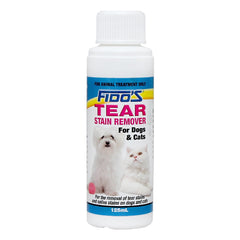 While eye goop can affect dogs of any breed, certain breeds are more predisposed to this issue due to their anatomy or genetic factors. Brachycephalic breeds, such as Bulldogs, Pugs, and Boston Terriers, are particularly prone to eye goop due to their short, flat faces and shallow eye sockets. These structural abnormalities can lead to a condition called brachycephalic ocular syndrome, which includes issues such as excessive tearing, blocked tear ducts, and corneal ulcers. Additionally, breeds with excessive skin folds, such as Shar-Peis or Bloodhounds, may be more prone to tear stains and eye infections.
While eye goop can affect dogs of any breed, certain breeds are more predisposed to this issue due to their anatomy or genetic factors. Brachycephalic breeds, such as Bulldogs, Pugs, and Boston Terriers, are particularly prone to eye goop due to their short, flat faces and shallow eye sockets. These structural abnormalities can lead to a condition called brachycephalic ocular syndrome, which includes issues such as excessive tearing, blocked tear ducts, and corneal ulcers. Additionally, breeds with excessive skin folds, such as Shar-Peis or Bloodhounds, may be more prone to tear stains and eye infections.
If you have a breed that is predisposed to eye goop, it's important to be proactive in managing their ocular health. Regularly cleaning your dog's face and eyes, keeping their skin folds dry, and seeking veterinary care at the first sign of any issues can help prevent complications and keep their eyes clear and healthy. Additionally, maintaining a healthy weight and avoiding excessive exposure to environmental irritants, such as dust or smoke, can also reduce the risk of eye goop in predisposed breeds.
How to prevent and manage eye goop in dogs
Preventing and managing eye goop in dogs involves a multi-faceted approach that addresses the underlying causes and promotes good ocular hygiene. Here are some practical tips to help keep your dog's eyes clear and healthy:.
1. Regularly clean your dog's face and eyes with a gentle cleanser specifically formulated for dogs. Use a soft cloth or cotton ball soaked in the cleanser to remove any debris or tear stains. Avoid using harsh chemicals or human eye drops, as they can irritate your dog's eyes.
2. Keep your dog's environment clean and free from potential allergens. Regularly vacuum your home, wash their bedding, and reduce exposure to dust, pollen, or other known allergens. Consider using air purifiers or keeping your dog in air-conditioned environments during allergy seasons.
3. Ensure your dog's diet is balanced and appropriate for their specific needs. Some dogs may benefit from hypoallergenic or limited-ingredient diets, especially if food allergies are suspected. Consult with your veterinarian to determine the best diet for your dog's overall health and specific dietary needs.
4. Regularly visit your veterinarian for comprehensive eye examinations. Early detection of any underlying issues can prevent them from progressing and causing more serious complications. Your veterinarian may recommend additional tests, such as tear production tests or genetic screenings, to assess your dog's ocular health.
5. Practice good grooming habits, particularly for breeds with excessive skin folds. Keep the skin folds dry and clean to prevent bacterial or fungal infections. Use gentle grooming products that are specifically formulated for dogs, and avoid getting water or shampoo in your dog's eyes.
6. Minimise excessive exposure to environmental irritants, such as smoke or strong chemicals. These can cause irritation or inflammation of the eyes, leading to increased tear production and eye goop. Avoid smoking around your dog and ensure their living environment is free from potential irritants.
By implementing these preventive measures and closely monitoring your dog's ocular health, you can effectively manage eye goop and reduce the risk of complications. However, it's important to remember that each dog is unique, and some may require more specialised care or medical interventions. If you have any concerns about your dog's eyes or if the eye goop persists or worsens despite your efforts, it's best to consult with your veterinarian for personalised advice and treatment options.
When to see a veterinarian for eye goop in dogs
While occasional eye goop is normal in dogs, there are certain signs that indicate the need for veterinary attention. If you notice any of the following symptoms, it's important to seek prompt veterinary care:
- Excessive or persistent eye goop that is accompanied by redness, swelling, or pain
- Changes in the appearance or color of the eye goop, such as a sudden increase in volume or a change in consistency
- Eye goop that is accompanied by other signs of discomfort, such as pawing at the eyes, squinting, or rubbing the face against furniture
- Cloudiness or changes in the clarity of the eye itself
- Any signs of vision impairment or changes in your dog's behaviour, such as bumping into objects or reluctance to engage in activities that require visual acuity
These symptoms may indicate a more serious underlying issue, such as an infection, corneal ulcer, or even a foreign object in the eye. Prompt veterinary care is crucial in these cases to prevent further damage and preserve your dog's ocular health.
Eye goop in dogs can be a common and sometimes perplexing issue. From tear stains to eye infections, understanding the causes and potential culprits behind this symptom is essential for maintaining your dog's ocular health. By recognising the signs, addressing the underlying causes, and implementing preventive measures, you can effectively manage eye goop and keep your furry friend's eyes clear, bright, and healthy. Remember to consult with your veterinarian for personalised advice and treatment options, as each dog is unique and may require individualised care. With proper care and attention, you can ensure that your dog's eyes remain a window to their vibrant and joyful spirit.
© weknowpets 2023


